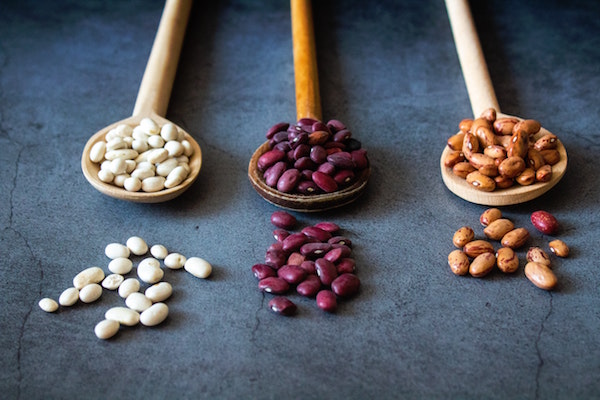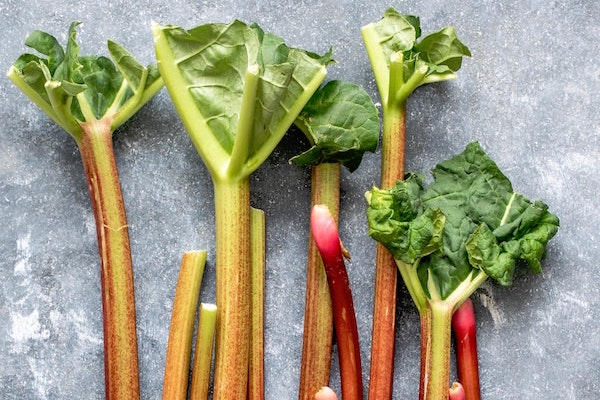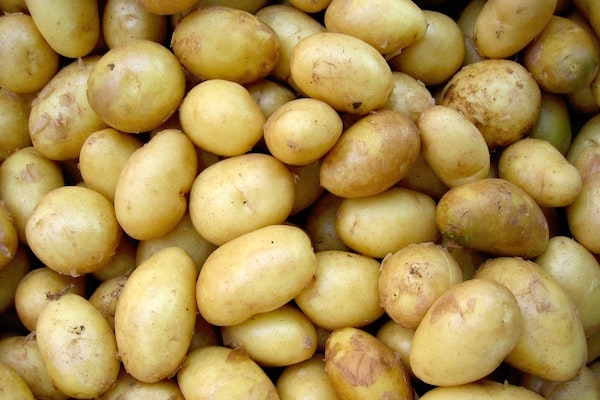Did you know that a number of potentially deadly food items can be found in the average kitchen? From almonds to apples to cherries to rhubarb, here’s a rundown of 12 foods you probably eat all the time that, under the right circumstances, could prove to be fatal.

Red Kidney Beans
Raw kidney beans contain high levels of a toxin called phytohaemagglutinin. Eating as few as four or five raw beans will trigger symptoms, which include vomiting and diarrhea. Cooking the beans, however, destroys the toxin and renders the beans completely safe to eat.

Chili Peppers
Eating a super-spicy chili pepper (probably on a dare) will probably leave you sweating profusely and feeling queasy, but won’t kill you. Eating a whole bunch of them, on the other hand, could. That’s because of a chemical within peppers called capsaicin, the active ingredient used to make pepper spray. Capsaicin is actually so strong it’s used as an industrial paint stripper; when ingested, it can cause gastrointestinal distress along with redness and swelling of the skin, and when inhaled can cause the airways to the lungs to constrict — in extreme cases, causing asphyxiation. Bottom line: a little chili pepper goes a long way.

Apple Seeds
An apple a day may keep the doctor away, but eating the seeds contained within its crunchy flesh could send you to the ER. That’s because apple seeds contain traces of cyanide. And while the seeds in a single apple don’t contain enough cyanide to cause any ill effects, it is feasible that one could eat enough to cause death — although that would take the seeds of more than 2,000 apples to achieve.

Rhubarb Leaves
The tart, crunchy stalk of the rhubarb plant makes for one tasty pie filling, but stay away from the leaves. In fact, the leaves contain two potent toxins, oxalic acid and anthraquinone glycoside. Symptoms of rhubarb poisoning include a burning sensation in the mouth and throat, breathing difficulties, diarrhea, nausea, stomach pain, vomiting and red-coloured urine. In more severe cases, one may also develop kidney stones, go into a coma and even die. So, yeah, go ahead and cut the leaves off.

Bitter Almonds
There are two varieties of almonds — sweet and bitter — and it’s the bitter ones you need to watch out for. When eaten raw, bitter almonds contain cyanide — and lots of it! Eating a few handfuls of raw almonds is enough to be fatal. The good news: all commercially grown almonds sold in North America are of the sweet variety, so feel free to eat as many as you want without fear of poisoning.

Cherry Seeds
Like bitter almonds, cherry seeds also contain high levels of cyanide (as do apricot and peach pits). When cherry seeds are crushed, they produce hydrogen cyanide, which is highly toxic, so the last thing you want to do is crunch up cherry seeds.

Wild Mushrooms
There are thousands of different varieties of mushrooms, and many of them are poisonous. One of the most toxic is the Amanita phalloides, commonly known as the Deathcap Toadstool, which will eventually cause liver failure and then death. Unless you’re a mushroom expert who can distinguish the toxic from the tasty, it’s probably best to get your mushrooms from the produce section and not the forest.

Green Potatoes
Potato stems and leaves contain high levels of a glycoalkaloid called solanine, a toxic substance that could put you in a coma. However, green potatoes can also include this poison, and there have been numerous reports of people getting severely ill from eating green potatoes after bags of potatoes had been left stored for too long and then cooked. Although uncommon, death by spud is indeed possible, so stay far away from the green ones.

Elderberries
Elderberries have been used for centuries as a folk remedy to treat the flu, and have been used to make such things as wine, jam, juice and syrup. When cooked, elderberries are perfectly safe, but it’s important to know that the seeds, stems and leaves of the elderberry plant contain cyanide. Uncooked berries may produce nausea, and it’s a big no-no to crush raw berries along with stems and leaves in order to make juice.

Lima Beans
Like red kidney beans, lima beans are entirely safe to eat — if they’re cooked. Raw lima beans, on the other hand, contain enough cyanide to make you quite ill, although you’d have to eat an insane amount of raw beans to ingest enough cyanide to cause death.

Nutmeg
Nutmeg poisoning is rare, but not impossible, especially around the holiday season when it’s hauled out of spice drawers for its annual appearance as an eggnog topper. Ingesting a lot of nutmeg — say, two tablespoons or more — can lead to some weird slightly hallucinogenic symptoms, including dizziness and nausea, as brain function slows down. “You’re not exactly comatose, but you feel really sluggish,” an MIT researcher told The New York Times when describing the effects of a nutmeg overdose. “And your remembrance of events during this time period is incomplete at best.”

Tomatoes
Tomatoes were once nicknamed “the poison apple” in the 1700s when British aristocrats took ill after eating them (the real culprit, it turned out, was the pewter plates; the acidity in the tomatoes leeched lead from the pewter, and people were actually suffering from lead poisoning, not tomato poisoning). Still, the leaves and stems of tomatoes are indeed toxic, containing high levels of solanine, even if the fruit itself isn’t.
